The data for 2011 US healthcare spending was reported in the January issue of Health Affairs. Below are some graphs showing how spending was distributed across the different categories of healthcare services in the years 2000, 2007, and 2011, as well as who paid for the spending. (My analyses and commentary follow these graphs. The source for all graphs is Health Affairs, 32, no. 1 (2013):87-99)
What Healthcare Spending Went For: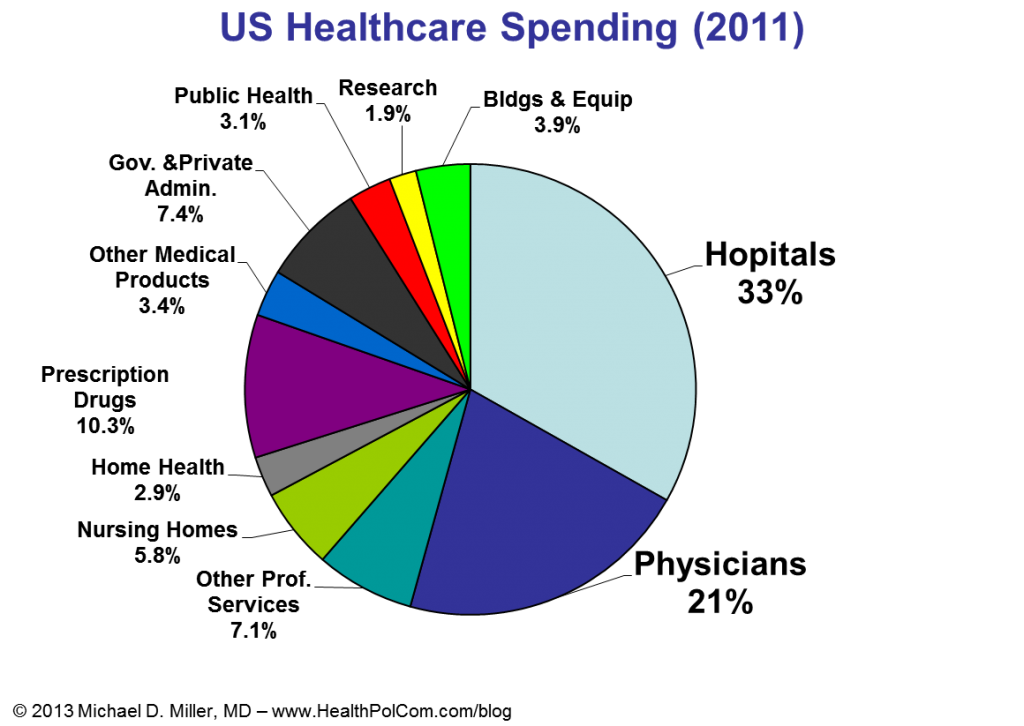
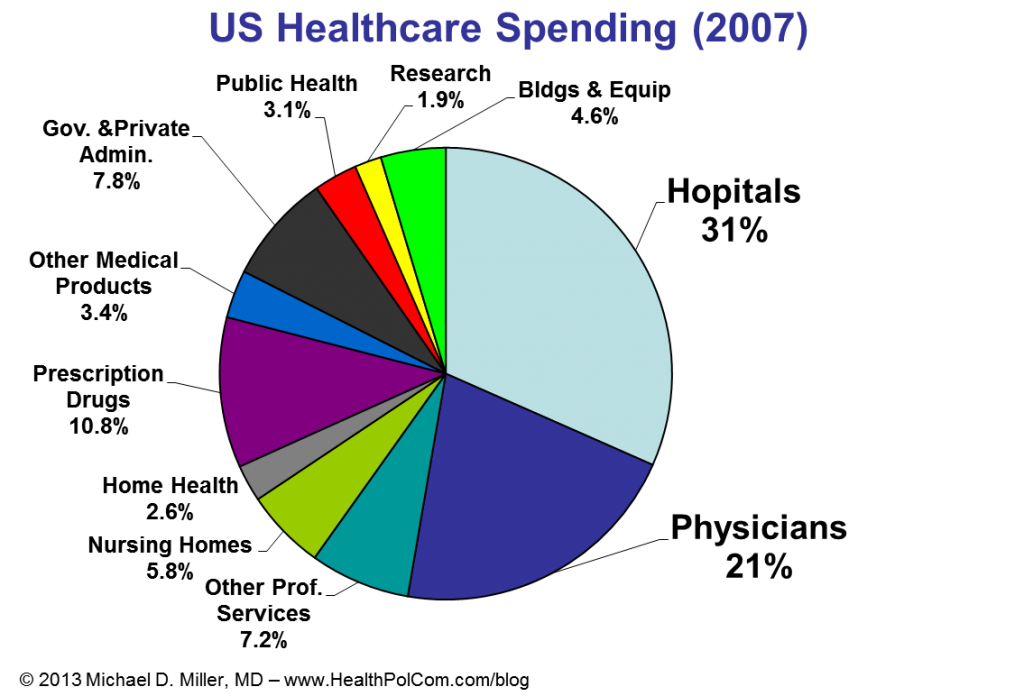
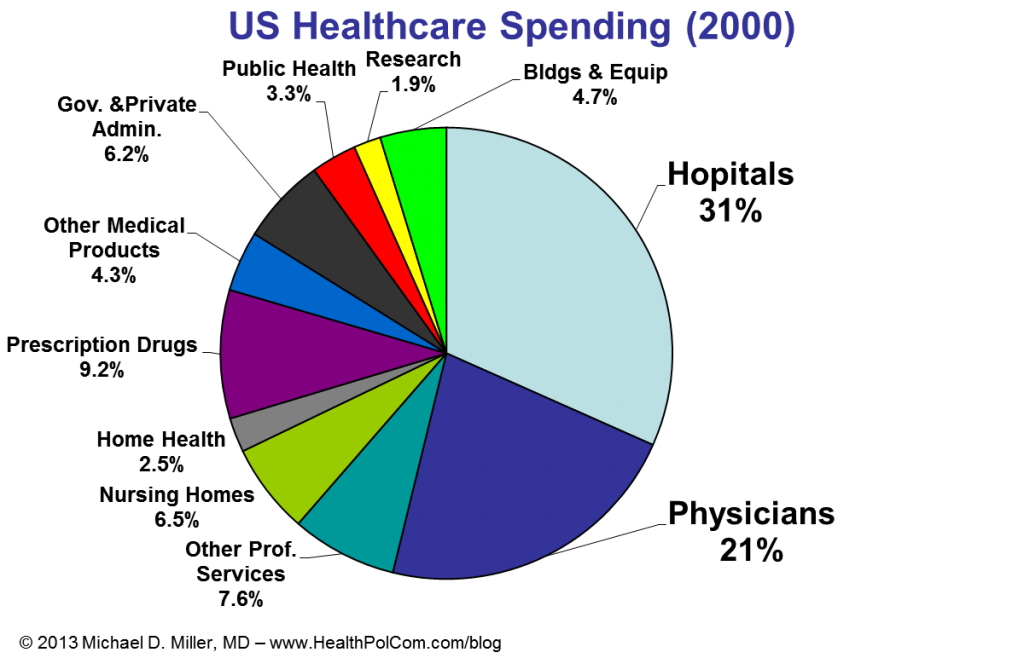
Where Healthcare Spending Funds Came From: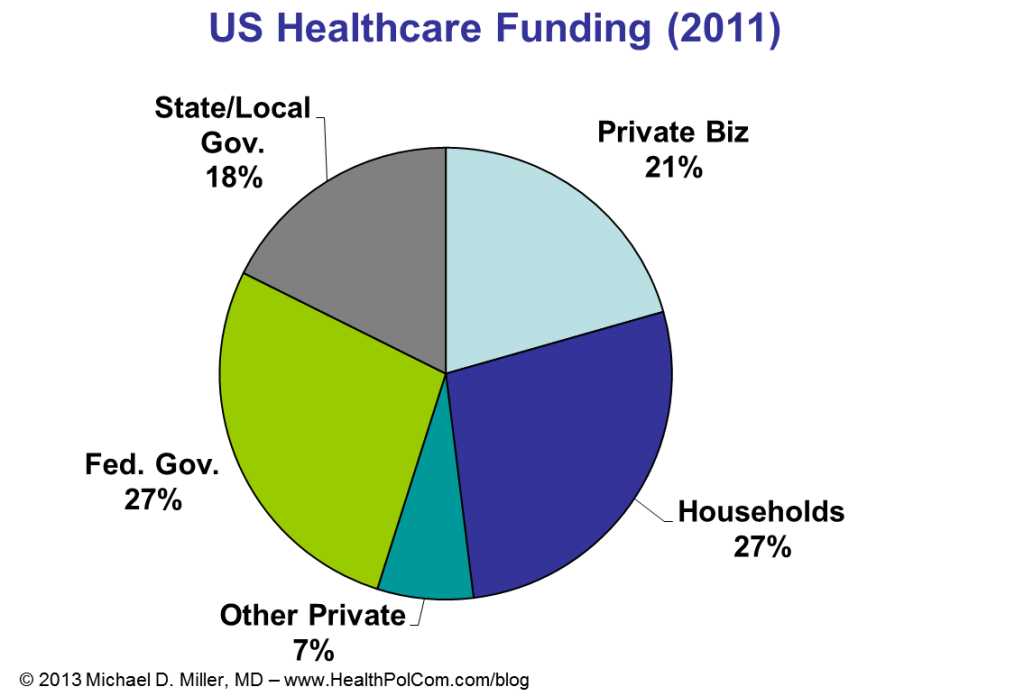
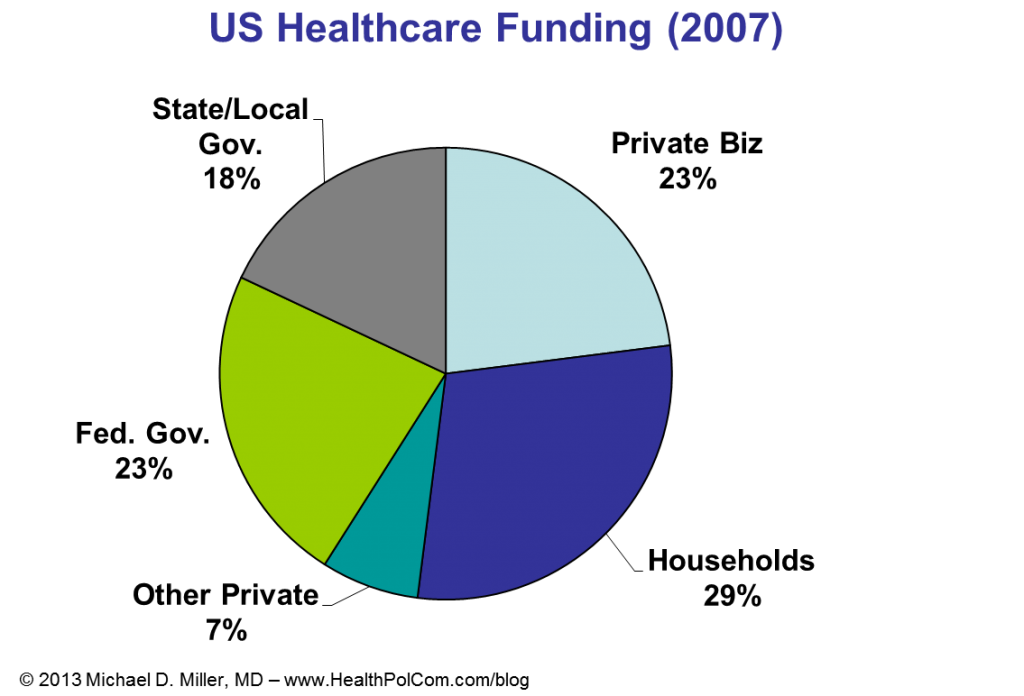
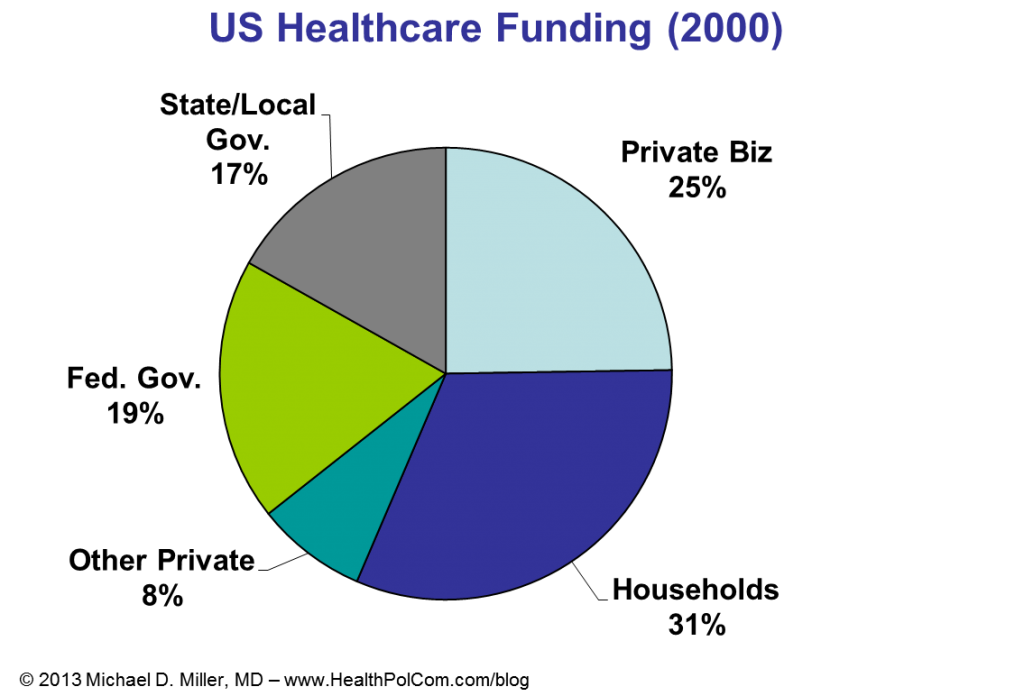 Three highlights from the Health Affairs article are:
Three highlights from the Health Affairs article are:
- The distribution of healthcare spending for various services and providers has been relatively constant despite significant growth in total and per capita spending.
